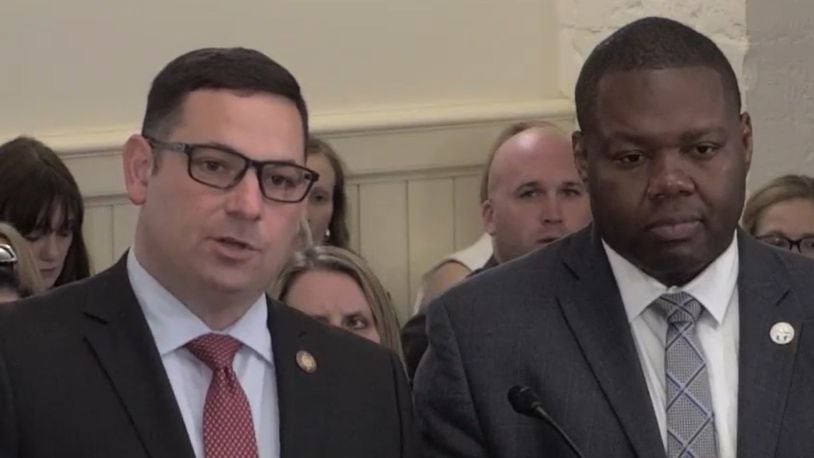The proposed legislation set staffing ratios depending on the hospital setting, ranging from one patient per nurse up to six patients per nurse, according to the bill’s analysis. The one patient per nurse level would be required for trauma emergency units and operating rooms, while the six patients per nurse would be for postpartum care and well-baby nurseries.
“Staffing shortages are creating safety issues for our patients. Fatality rates increase 7% for every additional patient a nurse takes on. Addressing these shortages is truly a matter of life or death,” Rogers said during the recent Ohio House Health Provider Services Committee meeting.
Exposure to shifts with high levels of registered nurses had lower odds of mortality by 8.7%, according to one longitudinal study published in the International Journal of Nursing Studies.
Low staffing was associated with higher odds of mortality by 10%, according to that same study. The associations between mortality and staffing by other groups were less clear.
Hospitals could be forced to reduce services if staffing ratios are required, said Sarah Hackenbracht, president and CEO of the Greater Dayton Area Hospital Association.
“If enacted, nurse-to-patient ratios would likely force hospitals to reduce services to meet ratio requirements instead of remaining nimble and flexible to meet the clinical needs of their community―24 hours a day, 7 days a week, 365 days a year,” Hackenbracht said.
The Greater Dayton Area Hospital Association’s Board of Trustees has not taken a position on HB 285 at this time, Hackenbracht said.
Flexibility in hospital settings is needed to provide peak care, she said.
“Patient needs can change rapidly, requiring flexibility in staffing levels to provide optimal care,” , Hackenbracht said. “Implementing rigid nurse staffing ratios can limit a hospital’s ability to allocate resources efficiently based on the unique requirements of their overall patient population. Hospitals require the autonomy to adjust staffing based on patient acuity and individual care plans.”
The bill also focuses on hospital settings.
“It is important to understand that nurses are essential clinical care partners for all health care entities―not just hospitals. Unfortunately, HB 285 singles out out hospitals with nurse-to-patient ratios that would only exacerbate existing workforce shortages,” Hackenbracht said.
The Ohio Department of Health would be the regulatory agency for this bill, and the department would also get to set specific ratios not otherwise mentioned in the bill.
The bill requires each hospital to establish a nurse staffing committee. At least 50% of the membership must consist of direct care registered nurses, with at least one nurse serving as a member from each of the hospital’s patient care units. The member who represents a unit is to be selected by the other direct care nurses from that unit.
The bill also includes a $20 million nursing student loan-to-grant program, under which nursing students may be awarded amounts that do not have to be repaid if a five-year service obligation is completed.
This program would issue loans to nursing students for $3,000 a year for up to four years, for a total of $12,000. If the nurses stay in Ohio after five years post-graduation, this loan would then convert to a grant which would not need to be repaid.
“We chose a five-year service obligation because by this time, many nurses are already settled and confident in their roles, making them less likely to leave the bedside,” Ghanbari said.
About the Author
